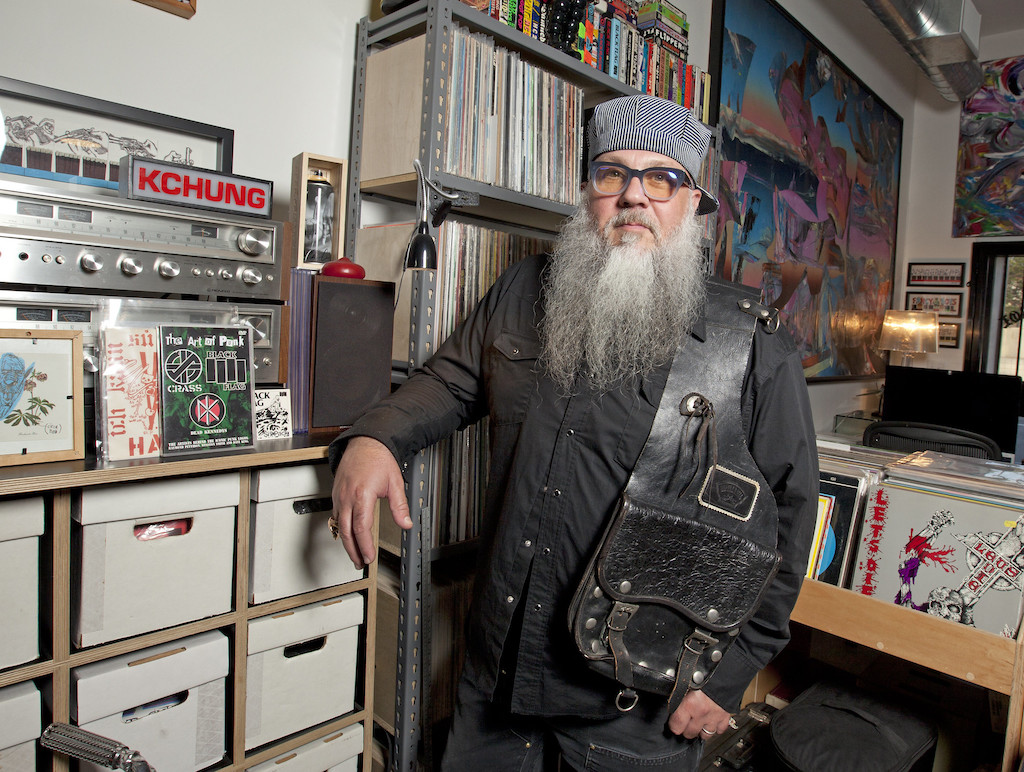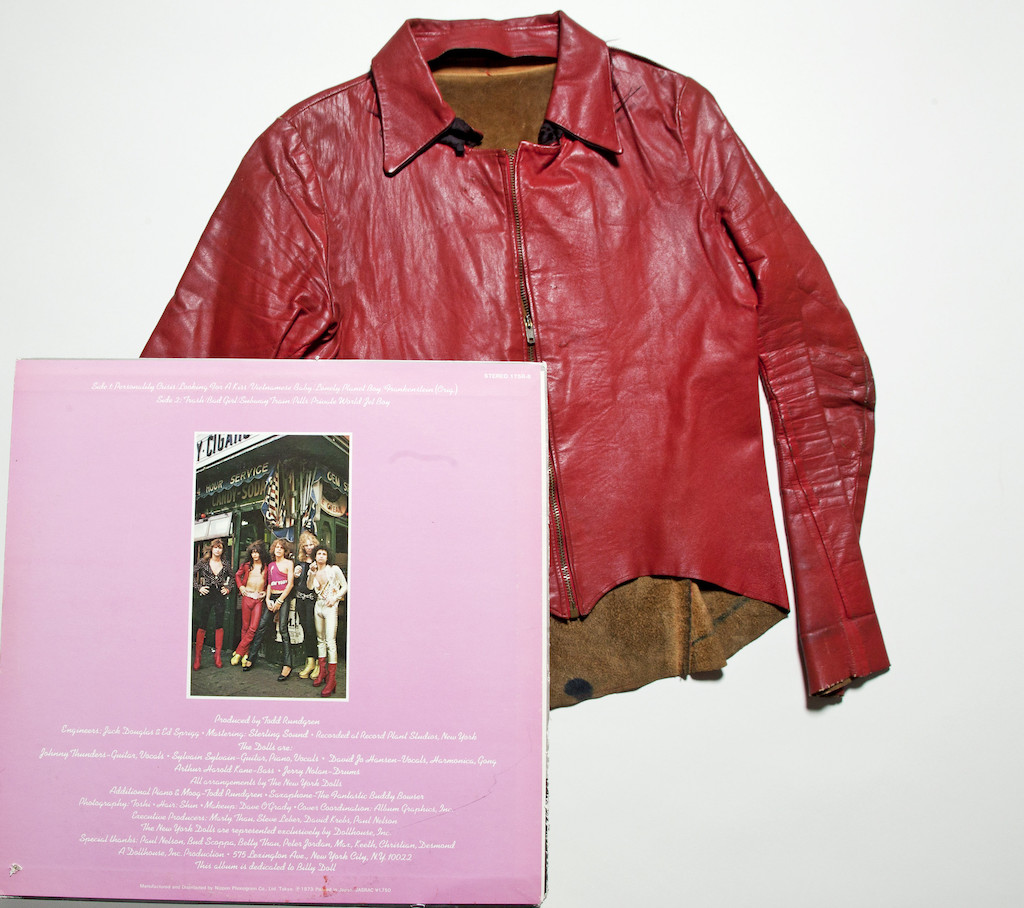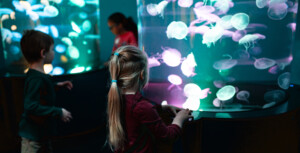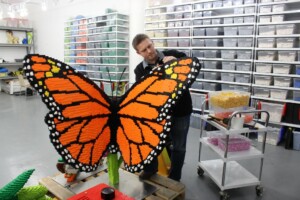The Punk Rock Museum will open in Las Vegas on 10 March 2023. Featuring exhibits, a bar, a tattoo shop and a wedding chapel, the museum is created and run, according to its website, by ‘the very people who lived, breathed, and created the history on display’.
The 12,000-square-foot attraction, located next to the Little Darlings strip club, is the brainchild of Mike “Fat Mike” Burkett, the bassist and lead vocalist for the band NOFX. He co-founded it in conjunction with other musicians, including Pennywise’s Fletcher Dragge, Bryan Ray Turcotte, Vinnie Fiorello and more, a group that became known as the ‘Punk Collective’.
Vinnie Fiorello, the former drummer, lyricist and founding member of the ska punk band Less Than Jake and CMO at the Punk Rock Museum, spoke to blooloop about the project, describing how it grew in scope from a vague idea about starting a shop for punk merchandise to a one-of-a-kind museum celebrating a living, growing genre.
Museum is a love letter to punk rock
Fiorello describes the project as “a love letter to punk rock.”
“Anything that has to do with bringing punk rock to a bunch of people who might not know what punk rock is, or to the diehards who know exactly what it is, is super exciting. I feel an immense amount of gratitude to be a part of the project.”
While there have been punk museums before, this, he explains, will be the largest permanent collection of punk rock artefacts.
He describes the concept’s inception:
“A little over two years ago, Fat Mike was talking with [former Warped Tour manager] Lisa Brownlee about putting together a punk shop in Las Vegas. I got a call about it where he said, ‘Hey, Vinnie, like we’re thinking about doing a Las Vegas punk shop. Would you be into helping with merch?’ I’m a merch junkie. I said, ‘Yeah, that would be great.’
“A few days later, I caught up with Mike again and said, ‘Okay, let’s talk about the Vegas punk shop’. He said, ‘No, Lisa and I were talking again, and it’s going to be a museum now. We were thinking about adding artefacts to a punk shop, and it spiralled from there. Let’s do a museum and then let’s add a store to it.’
“That was pretty much ground zero for what is, right now, a little over a two-year project.”
Funding the project
Funding was the first issue to establish. In terms of finding investors, he explains:
“We reached out to some of the longtime punkers we know, whether it be labels or bands. The list of investors started to grow.”
Before long the people guiding the project, investors, contributors and the core founding group, became known as the Punk Collective. What makes The Punk Rock Museum different from any other museum is the fact it is owned and operated by the people whose histories and artefacts constitute the story of punk.
From April, visitors will be able to book a guided tour with one of the legends of punk rock and hear stories from the people to whom they happened.
Tours, which will take place several times a day, will be led by guides such as Louiche Mayorga from Suicidal Tendencies, Noodles from The Offspring, Stacey Dee from Bad Cop/Bad Cop, Don Bolles from The Germs/45 Grave, Angelo Moore from Fishbone, Greg Hetson from Circle Jerks/Punk Rock Karaoke, Warren Fitzgerald from The Vandals, Pete Koller from Sick Of It All, Smelly from NOFX, Roger Miret from Agnostic Front, Joe Escalante from The Vandals, Linh Le from Bad Cop/Bad Cop, Intruder Blue from Masked Intruder, Scott Shiflett from Face To Face, Paddy Costello from Dillinger Four, Zach Blair from Rise Against, among others – and Vinnie Fiorello himself.
Touring the Punk Rock Museum with a punk rock legend
“I find it pretty exciting because I would love to go to, let’s say, the Warhol Museum in Pittsburgh and have someone go, ‘Hey, this is how this happened, and this is what was going on,’ he says:
“It offers a sort of behind-the-scenes story about what we’re looking at and what we’re walking through. What better way could there be to explain different moments of punk rock than through the memories of punk rockers themselves – through the eyes of those that were band members, songwriters or label heads, or whatever? To hear how they came into it, to hear their stories, and the stories that they heard; to be walked through it by them, is exciting.”
It brings an unprecedented level of authenticity.
“It opens up a different level of the museum. You can walk through and see the artefacts and that’s great, but hearing the stories and catching the vibe from band members, that’s something else.”
The museum is emphatically not focused purely on bands that have been a huge success in worldly terms. It celebrates, as its initial press release states, ‘’… every punk band that has ever been on a flyer, played in a basement or recorded a demo tape. This is an all-inclusive museum dedicated to punk rock for punks and looky-loos alike!”
An inclusive ethos
The Wall of Insignificant and Unknown Bands, which shows how far punk has spread, is a testament to the Punk Rock Museum’s inclusive ethos.
“It was Fat Mike who brought that into play,” Fiorello says. “There are hundreds, if not thousands, of punk bands that never made it out of their garage space or small town, or they were popular in their small town, but never toured, or only had a demo tape release. This gives people a chance to live in infamy on the wall.”
The museum traces punk from its origins to the present day:
“The exhibits start in New York in the seventies. There is a little bit of a proto-punk nod early on, but it really gets into New York in the seventies, and then goes from there in a linear-ish timeline, moving to London in the seventies, New York in the eighties, Southern California in the eighties, then, it’s not a history lesson, but right after punk broke in the nineties, it became global, and while it was always centred on location in the nineties and beyond, you’re now talking about a more global perspective.”
Punk Rock Museum: beyond the music
Throughout the timeline, the interpretation touches on the elements that fed into the movement: politics, economics, fashion, education, visual art, and – of course – the music:
“It all tends to build upon itself,” Fiorello says. “Punk rock’s roots go deep on all of that.”
Unusually, the museum will feature a bar, a tattoo shop, and a wedding chapel:
“That is the triple crown,” he comments. “In terms of the rollout, the museum will open on 10 March; we’re going to start offering weddings in the chapel on 1 April, and then tattoos on 1 May.”
“What we’re trying to do is have all of the culture that surrounds punk music and Vegas. You can come along, and take part in as much as you want to. If you don’t want to get tattooed, it still adds another layer to the museum to have that experience, and that’s what we’re going for: anything where people can roll in and go, ‘I sat at the bar and I looked at this and heard this, and then after we had drinks we walked through the exhibit and we saw someone get married or someone get tattooed.’
“It’s exciting. It’s cool and immersive.”
Getting hands-on
In the spirit of hands-on exhibits, there is also the Jam Room, where visitors can play the guitars from Rise Against, NOFX, Pennywise, Sick of it All, Strung Out, and more. If something gets broken, as the website says, ‘…We fix it – just like we did on tour.’
Fiorello says:
“The thing about the Jam Room is that they are the actual instruments from band members. There is a bass that Fat Mike played, and you could play it – or Fletcher from Pennywise’s guitar. There are guitars belonging to band members from Strung Out. It’s exciting. It’s hands-on. If you were a musician just beginning and you can put your hands on something with this history, that’s pretty darn cool.”
Designing the Punk Rock Museum
The museum’s design is by Ralph Appelbaum Associates (RAA), leaders in the planning and design of museums, exhibitions, educational environments and visitor attractions.
Fiorello comments:
“RAA came on a little bit later. Their portfolio is just insane. We needed, as a museum, to have some pops. It can’t just be all artefacts, so we’ve been working with RAA to craft some of the other exhibits that are outside of the display. An example would be the leather jacket wall.”
“We had collected a lot of leather jackets. In punk rock music, leather jackets are your battle armour: something you always wear, and which you personalise. We needed a way to display the collection so it became a focal point and a pop. That’s where RAA came in, to craft the way that it is.
“They have also been working on the Intro Room. It’s the first place that you walk into, and it sets the tone for the rest of the museum.”
Punk Rock Museum caters to wide audience
The target audience covers five decades, he contends:
“If you’re talking about five decades – 50 years – of punk rock music, the demographic goes from early teens to 60 years old. There’s something there for everybody. I would pride myself on the demographic being punkers coming in and really enjoying the history, but I would think that the age range is a very wide swath, and that’s a great thing.”
“I would love for parents to show up with their kids, and say, ‘Hey, these were my favourite bands,’ and then for the kids to say, ‘Hey, upstairs in the 2000s, those are MY favourite bands.’
“I’m expecting to hear a lot of those stories when people walk through about when they started to like punk rock and when punk rock became that component that defined who they were and who their friends were.”
Collectable merch
The Punk Rock Museum’s shop will sell collectable merchandise:
“We’re actually just getting into that now,” Fiorello says, “To give you an overview of what we’re talking about, not only will you be able to come in and get the typical Vegas merch – logo-oriented shot glasses, or whatever – but we’re diving a bit deeper into more well-curated pieces of art, from photos or a limited-edition set of postcards to limited T-shirt runs that, if you’re here and looking at it, will most likely never be here again.”
“An important thing for us is just to keep generating a very well-curated and limited line. We will also have the typical sort of tourist Vegas merch available for people who just want to grab something small, but we really want to have a higher tier of objects where people come in and go, ‘I really want this one-of-a-kind item,’ and leave with it – and then it’s never available again.”
In addition to the weddings and the tattoo shop, which Fiorello describes as “events unto themselves”, there will be authors coming in occasionally to do spoken-word events, and some acoustic background music, although:
“A museum’s not built for live music,” he points out. “We may have events outside, but we’ll see.”
In the meantime, there is plenty going on.
Museum will evolve
He adds in conclusion:
“You don’t really know what something’s going to become. You could plan on everything, and you could have a clear picture in your mind’s eye of what it is, but once the doors open, then the museum’s going to become what the museum wants to be.
“I would think that a person who comes in the first year to the museum and then comes back three years later will see a completely different museum.
“It’s punk rock, so it’s a living museum, still. There are active bands, there are new ones all the time, and we’re never stopping to look for artefacts. You’re going to have to just dive into this, and when you come back later, it’s going to have a different feel, a different look, different artefacts. That’s something that separates us from other museums. It’s a living museum, and continues to grow and evolve and morph.”





















